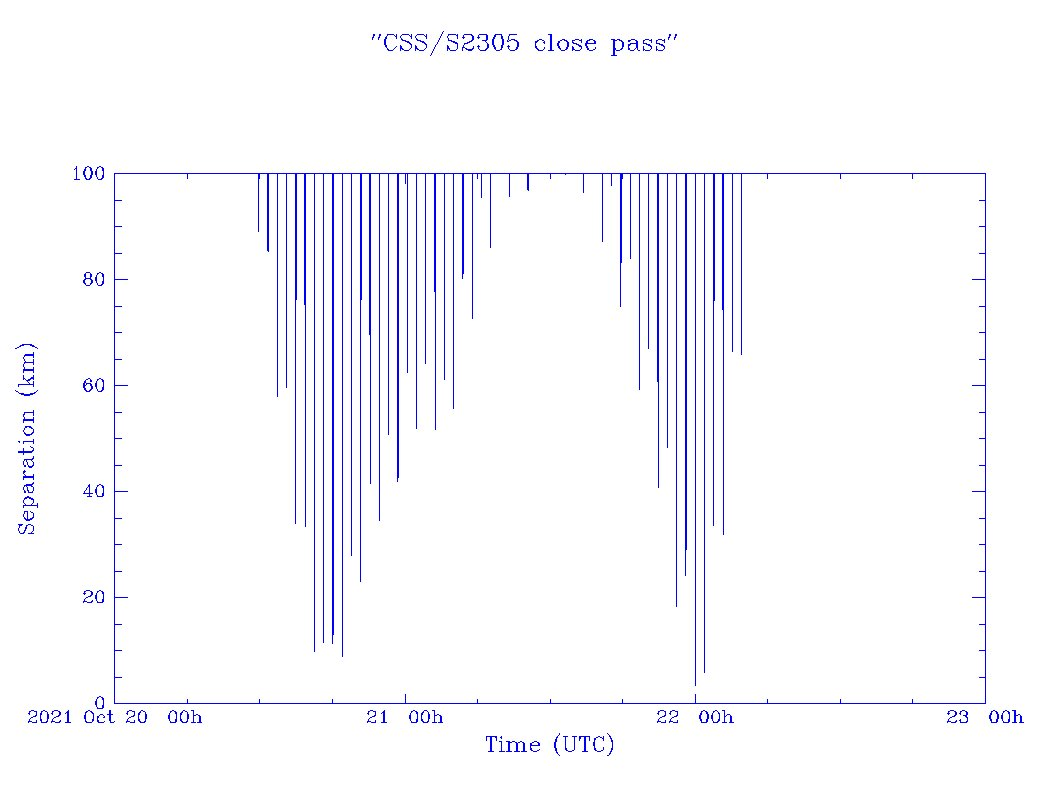Various news outlets reported on the Chinese government complaining about SpaceX Starlink satellites (#1095 and #2305) getting so close to their Tiangong Space Station that they had to initiate evasive maneuvers to avoid a collision. The Chinese government requested the United Nations draw attention to this incident in the context of the responsibilities of states parties to the Outer Space Treaty.
The incidents are described as follows:
1. The first collision avoidance
As from 19 April 2020, the Starlink-1095 satellite had been travelling stably in orbit at an average altitude of around 555 km. Between 16 May and 24 June 2021, the Starlink-1095 satellite manoeuvred continuously to an orbit of around 382 km, and then stayed in that orbit. A close encounter occurred between the Starlink-1095 satellite and the China Space Station on 1 July 2021. For safety reasons, the China Space Station took the initiative to conduct an evasive manoeuvre in the evening of that day to avoid a potential collision between the two spacecraft.
2. The second collision avoidance
On 21 October 2021, the Starlink-2305 satellite had a subsequent close encounter with the China Space Station. As the satellite was continuously manoeuvring, the manoeuvre strategy was unknown and orbital errors were hard to be assessed, there was thus a collision risk between the Starlink-2305 satellite and the China Space Station. To ensure the safety and lives of in-orbit astronauts, the China Space Station performed an evasive manoeuvre again on the same day to avoid a potential collision between the two spacecraft.
The full text can be found here.
Question: how close did Starlink-1905 and Starlink-2305 get to the Tiangong space station?


